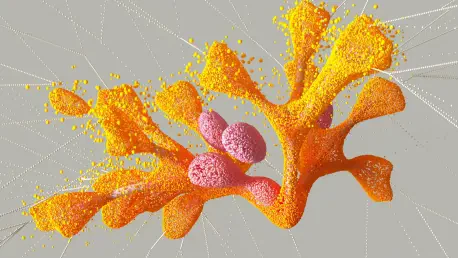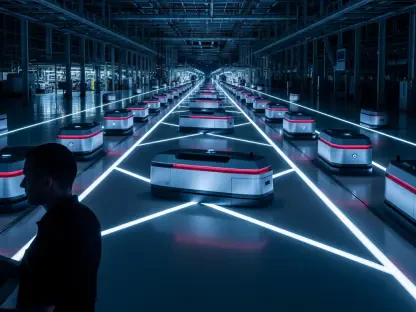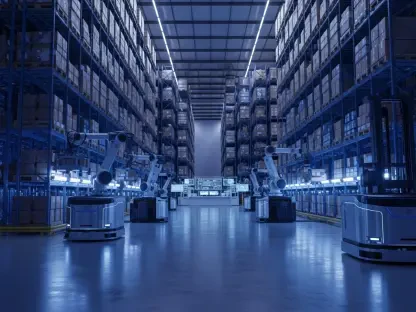In an era where technology is reshaping industries at an unprecedented pace, the food and beverage (F&B) sector stands out as a field undergoing a profound transformation through artificial intelligence (AI). Far from being a threat to the roles of food scientists, AI is emerging as a vital ally in research and development (R&D) and new product development (NPD). This powerful technology is streamlining complex processes, accelerating innovation, and enabling professionals to tackle challenges with greater precision. By acting as a collaborative tool, AI enhances human expertise rather than replacing it, ensuring that food scientists remain at the heart of creating the next generation of products. This dynamic partnership promises not only to revolutionize how food science operates but also to address pressing industry demands for speed and efficiency in bringing new offerings to market. The following exploration delves into how AI is making its mark, the challenges it presents, and the path forward for its responsible integration.
AI as a Partner in Innovation
The integration of AI into food science is redefining the early stages of product creation, particularly through advanced platforms like CoDeveloper and its generative feature Sous, developed by the Institute of Food Technologists (IFT). These tools connect food scientists to expansive databases filled with decades of peer-reviewed research and curated content, enabling the rapid development of initial formulations. By drastically reducing the number of iterations needed to perfect a product, AI shortens the critical lab-to-market timeline. This efficiency is a game-changer for manufacturers striving to stay ahead in a highly competitive landscape. Importantly, while AI handles data-heavy tasks, it leaves the nuanced decision-making and creative problem-solving to human experts, ensuring that their skills remain indispensable in shaping innovative food solutions that meet consumer needs.
Beyond speeding up formulation, AI functions as a virtual “co-scientist” that amplifies the capabilities of food professionals. Features like Sous serve as conversational assistants, allowing scientists to discuss desired product traits, adjust recipes, and anticipate technical hurdles before they arise. By leveraging sophisticated systems that pull from credible, science-backed data, AI minimizes the learning curve for those working with unfamiliar ingredients or venturing into new product categories. This supportive role ensures that food scientists can focus on strategic thinking and innovation, rather than getting bogged down by repetitive research tasks. Far from displacing human input, AI acts as a catalyst, empowering professionals to push boundaries and explore novel ideas with confidence and precision.
The Future Growth of AI Capabilities
Looking ahead, the potential of AI in food science is poised for remarkable expansion, with current tools representing merely the starting point of what’s possible. Experts in the field emphasize that as AI becomes more tailored to the specific needs of the F&B industry, its outputs will grow increasingly accurate and actionable. This evolution means that platforms will better address niche challenges, from optimizing ingredient interactions to predicting consumer trends with greater reliability. For R&D teams, adopting AI now positions them to capitalize on these advancements, ensuring they remain competitive as the technology matures. The promise of more refined tools underscores the importance of staying ahead of the curve in a field where innovation is the key to success.
This ongoing development also signals a shift in how food science workflows might evolve over time. As AI systems integrate deeper insights and more specialized algorithms, they will likely offer predictive capabilities that can foresee formulation issues or market demands even before they emerge. Such forward-thinking applications could transform how scientists approach complex projects, allowing for proactive rather than reactive strategies. However, even as AI grows smarter, the human element remains critical—judgment, creativity, and ethical considerations cannot be replicated by algorithms. Embracing this technology early ensures that food scientists are not just keeping pace but are actively shaping the future of their industry with a powerful digital partner by their side.
Addressing the Challenges of AI Integration
While AI brings undeniable benefits to food science, its adoption comes with significant challenges that must be carefully navigated. Privacy stands out as a primary concern, especially since many AI systems rely on aggregate data for training, which could inadvertently expose sensitive company information. If proprietary formulations or trade secrets are entered into unsecured platforms, there’s a risk of compromising competitive advantages. To mitigate this, companies must prioritize selecting AI tools with robust data protection measures and ensure strict protocols for what information is shared. This cautious approach is essential to maintain trust and confidentiality in an industry where innovation is often a closely guarded asset.
Another pressing issue lies in the accuracy and relevance of AI-generated outputs, which can sometimes fall short of expectations. Not all platforms are updated with the latest research, and some may draw from sources lacking peer-reviewed credibility, resulting in biased or outdated suggestions. This limitation reinforces the need for human oversight, as food scientists must diligently verify the information provided by AI tools to ensure it aligns with project goals. Without this critical evaluation, there’s a risk of basing decisions on flawed data, which could derail development efforts. Thus, while AI can streamline processes, it cannot fully substitute the discerning expertise of professionals who understand the nuances of their field.
Fostering Responsible AI Use in Organizations
Integrating AI into established workflows within the F&B industry often encounters internal obstacles that require strategic solutions. Resistance to change is common, particularly among team members unfamiliar with digital tools, which can hinder effective adoption. Additionally, meshing AI with legacy systems poses technical challenges that demand time and resources to resolve. To overcome these barriers, companies must invest in comprehensive training programs that demystify AI and demonstrate its value in daily tasks. Cultivating a culture that embraces technological advancement ensures that staff are equipped to use these tools consistently and confidently, maximizing their potential to enhance productivity without undermining existing processes.
Equally important is addressing the ethical dimensions of AI implementation to safeguard its benefits. Selecting systems that prioritize data security and relevance is a critical step, as is educating teams on proper usage to prevent misuse or over-reliance on technology. Regular updates to AI platforms are necessary to maintain their alignment with the latest scientific advancements, ensuring outputs remain trustworthy. By balancing innovation with responsibility, organizations can harness AI as a force for progress while preserving the integrity of their operations. This thoughtful approach not only mitigates risks but also reinforces the indispensable role of human judgment in navigating the complexities of food science.
Shaping a Collaborative Future for Food Science
Reflecting on the journey of AI in food science, it’s evident that the technology has proven to be a transformative ally rather than a disruptor of jobs. Its ability to streamline R&D, enhance formulation precision, and provide data-driven insights has reshaped how professionals approach their craft. Tools like CoDeveloper and Sous have demonstrated that efficiency and innovation can coexist with human expertise, creating a balanced synergy that elevates the industry’s capacity to meet market demands. Challenges such as privacy risks and data accuracy have been acknowledged and addressed through vigilant oversight, ensuring that progress does not come at the expense of security or credibility.
Looking ahead, the path forward involves a commitment to continuous learning and adaptation for food scientists and organizations alike. Investing in secure, up-to-date AI systems and fostering a culture of technological fluency will be crucial steps to sustain this momentum. Encouraging active collaboration between AI tools and human creativity can unlock untapped potential, driving the next wave of breakthroughs in food science. By embracing this partnership with a focus on responsibility, the industry can confidently navigate future complexities, ensuring that innovation remains both impactful and sustainable for years to come.









